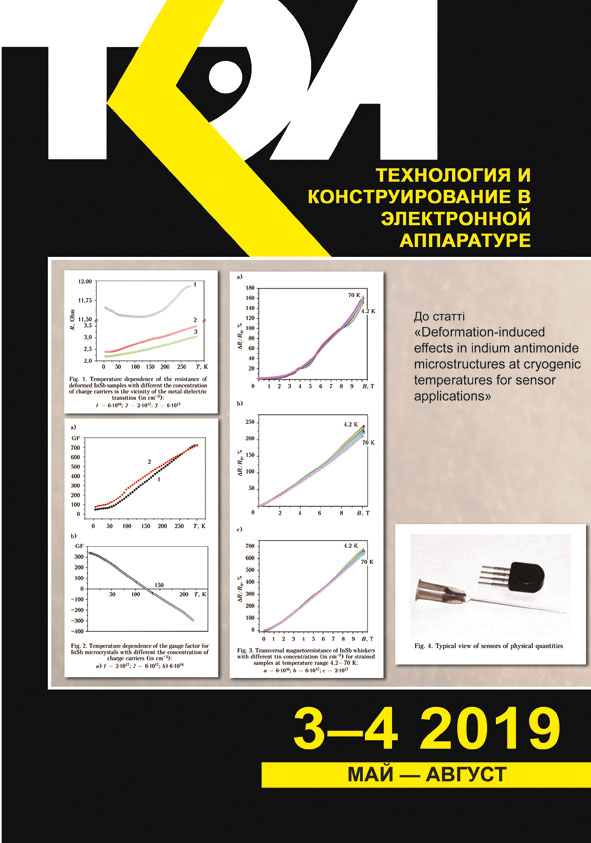Highly informative integrated method for determining the type of engine oil
Abstract
The presence of correlation dependences between the type of motor oil and its refractometric and electrophysical characteristics (refractive index, specific resistance and dielectric constant) is experimentally shown. Methods for determining the type of engine oil are proposed, based on the measurement of these characteristics, as well as prototypes of portable measuring devices that implement these methods. Impedance spectroscopy was used to determine the resistivity and dielectric constant, and a device based on the effect of surface plasmon resonance was used to determine the refractive index. It is shown that the accuracy of identification of the type of motor oil increases significantly with simultaneous consideration of all above physical characteristics. It is shown that this complex method can most accurately detect, on the one hand, purely synthetic motor oils, on the other hand, oils with a mineral component (semi-synthetic and mineral). The results of the studies can be used to identify the type of motor oil as well as to detect forgery.
References
IEC 60247:2004. Insulating liquids - Measurement of relative permittivity, dielectric dissipation factor (tan d) and d.c. resistivity.
IEC 61620:1998. Insulating liquids – Determination of the dielectric dissipation factor by measurement of the conductance and capacitance.
Chernozhukov N.I., Kreyn S.E., Losykov B.V. Khimiya mineral’nykh masel [Chemistry of mineral oils]. GosTopTekhizdat, 1951, 307 p. (Rus)
Mamed’yarov M.A. Khimiya sinteticheskikh masel [Chemistry of synthetic oils]. Leningrad, Chemistry, 1989, 240 p. (Rus)
Kukla O.L., Mamykin A.V., Maistrenko A.S. et al. [Application of impedance spectroscopy method for analysis of benzanol fuels]. Tekhnologiya i Konstruirovanie v Elektronnoi Apparature, 2015, no. 2–3, pp. 61–67. http://dx.doi.org/10.15222/TKEA2015.2-3.61 (Rus)
Kukla O.L., Mamykin A.V., Maistrenko A.S., Pavluchenko.A.S. [Express analyzer of functional materials parameters based on the impedance spectroscopy method]. Sensor electronics and microsystem technologies, 2012, vol. 3(9), iss. 3, pp. 6–15. https://doi.org/10.18524/1815-7459.2012.3.114507 (Rus)
Chakchir B.A., Alekseyeva G.M. Fotometricheskiye metody analiza: Metodicheskiye ukazaniya [Photometric methods of analysis: Guidelines]. Saint Petersburg, SPChFA, 2002. (Rus)
Zaburnagin V.P., Jarovoj P.N. [Application of laser fluorescence analysis for the identification of petroleum products]. Journal of Applied Spectroscopy, 1988, vol. 48, iss. 5, pp. 819–822. (Rus)
Powell J.R., Toms A.M. Molecular Analysis of Lubricants by FTIR Spectroscopy. P/PM Technology, 1997, vol. 10, no. 4, pp. 58—64.
Bley T., Pignanelli E., Schűtze A. Multi-channel IR sensor system for determination of oil degradation. Journal of Sensors and Sensor Systems, 2014, vol. 3, pp. 121–132. https://doi.org/10.5194/jsss-3-121-2014
Myshkin N.K., Holodilov O.V., Markova L.V., Semenuk M.S. [Diagnosis of wear of lubricated mobile couplings]. Friction and wear, 1986, vol. 7, iss. 6, pp. 1091–1101. (Rus)
Milanese M., Ricciardi A., Manerab M.G. et al. Real time oil control by surface plasmon resonance transduction methodology. Sensors and Actuators A, 2015, vol. 223, pp. 97–104. https://doi.org/10.1016/j.sna.2014.12.008
Shalabney A. , Abdulhalim I. Sensitivity-enhancement methods for surface plasmon sensors. Laser Photonics Rev., 2011, vol. 5, no 4, no. 571–606.
Voytovich I.D., Korsunskiy V. M. Sensory na osnove plazmonnogo rezonansa: printsipy, tekhnologii, primeneniya [Plasmon resonance sensors: principles, technologies, applications]. Kyiv, Stal, 2011, 534 p. (Rus)
Maslov V.P., Dorozinsky G.V., Dorozinska H.V. Promising method for determining the concentration of nanosized diamond powders in water suspensions. Functional Materials Journal (FMJ), 2018, vol. 25, iss. 1, pp. 158–164. https://doi.org/10.15407/fm25.01.158
Kretschmann E., Raether H. Radiative decay of nonradiative surface plasmons excited by light. Naturforschung, 1968, vol. 123, pp. 2135–2136. https://doi.org/10.1515/zna-1968-1247
Liptuga A.I., Dorozinsky G. V., Gordienko V.I. et al. Diagnostics of motor oil quality by using the device based on surface plasmon resonance phenomenon. Scholars Journal of Engineering and Technology, 2015, vol. 3, pp. 372–374.
Maslov V.P., Dorozinsky G.V., Khrystosenko R.V. et al. Surface plasmon resonance – a promising method for estimating the quality of motor oil. Trans & Motauto World Journal, 2017, vol. 1, pp. 41–44.
Dorozinska H., Dorozinsky G., Maslov V., Kachur N. The use surface plasmon resonance to determine the optical parameters of UV-adhesive and control polymerization process. American Journal of Materials Science and Application, 2019, vol. 7, N 1, pp. 25–29. https://doi.org/10.15406/mseij.2019.03.00090
Shirshov Yu.M., Samoylov A.V., Christosenko R.V. et al. [Analysis and numerical simulation of mechanical angle-scanning SPR spectrometers: an algorithm for determining the minimum angular position]. Registration, storage and processing of data, 2004, vol. 6, iss. 3, pp. 3–18. http://dspace.nbuv.gov.ua/handle/123456789/50686 (Rus)
Dorozinska H.V., Turu T.A., Markina O.M. et al. Influence of temperature on the measuring accuracy of devices based on surface plasmon resonance phenomenon. Modern Instrumentation, 2018, vol. 7, pp. 1–10. https://doi.org/10.4236/mi.2018.71001
Azzam R., Bashara N. Ellipsometriya i polyarizovannyy svet [Ellipsometry and polarized light]. Moskow, Mir, 1981, 583 p. (Rus)
Grigorov A.B., Naglyuk I.S. [Dielectric properties of motor oils]. Automobile Transport, Kharkov, 2009, no. 25, pp. 167–170. (Rus)
Copyright (c) 2019 Mamykin A. V., Kukla A. L., Matvienko L. M., Dorozinska H. V., Maslov V. P., Dorozinsky G. V.

This work is licensed under a Creative Commons Attribution 4.0 International License.

